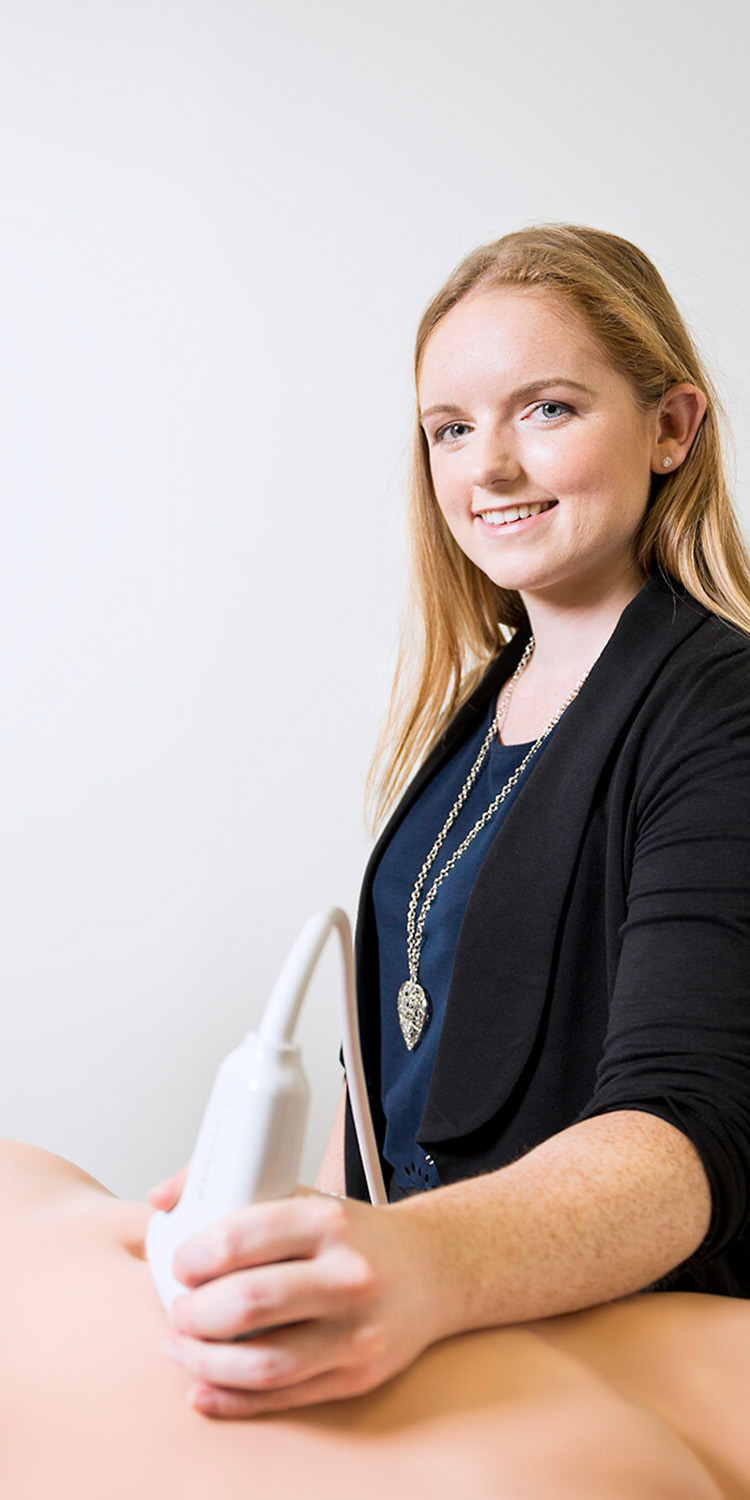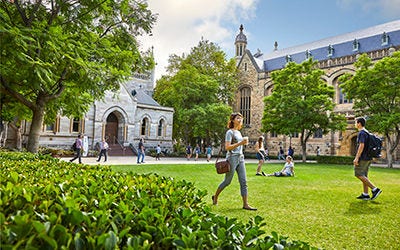Entry requirements
Admission criteria
To be eligible, an applicant must have achieved at least one of the following minimum entry requirements and demonstrate they fulfil any prerequisite and essential criteria for admission. In cases where there are more eligible applicants than available places, admission will be competitive with ranks based on the entry criteria.
Secondary education (Year 12)
- Completion of a secondary education qualification equivalent to the South Australian Certificate of Education (SACE).
Vocational Education and Training (VET)
- Completion of an award from a registered training organisation (RTO) at Advanced Diploma (AQF level 6) or higher.
Higher education study
- Successful completion of at least 6 months full-time study (or equivalent part-time) in a recognised higher education program at a Bachelor (AQF level 7) degree or higher; OR
- Successful completion of an undergraduate diploma (AQF level 5) or higher education program at a recognised higher education institution.
English language entry requirements
In addition, international students who speak English as an additional language must have obtained one of the following standards within the last two years prior to admission. Possession of one or more of these qualifications, in addition to the academic entry requirements, does not, in itself, guarantee a place at Adelaide University. Applications are considered on an individual basis and selection is competitive. Where previous study/work experience was conducted in English, the application must be accompanied by certified documentation from the educational institution/employer certifying that the language of instruction/employment was English.
- IELTS Overall 7
- IELTS Reading 7
- IELTS Listening 7
- IELTS Speaking 7
- IELTS Writing 7
Please access the following link for a comprehensive list of English language tests accepted by Adelaide University and other important information in relation to meeting the University’s language requirements:
Equivalent English qualificationsInternational admissions by country
| Country | Requirement | Score |
|---|---|---|
| Australia | ATAR | 90 |
| Bangladesh | Higher Secondary Certificate (HSC) | 4.97 |
| Canada | Ontario Secondary School Diploma (OSSD) | 85% |
| China | Gaokao | 80% |
| Denmark | Studentereksamen (stx: Upper Secondary School Diploma) | 7 (Good) |
| France | French Baccalaureate | 13.5 |
| Global | International Baccalaureate | 33 |
| Hong Kong | Diploma of Secondary Education (HKDSE) | 21 |
| India | CBSE and CISCE | 90 |
| India | State Board Examinations | 98 |
| Indonesia | SMA III | 90% |
| Kenya | Certificate of Secondary Education (KCSE) | A- |
| Malaysia | Matrikulasi | 3.33 |
| Malaysia | Sijil Tinggi Persekolahan Malaysia (STPM) | 3.33 |
| Malaysia | United Entrance Certificate (UEC) | 11 |
| Nepal | National Examinations Board (NEB) | 3.61 |
| Norway | Upper Secondary School Certificate (Vitnemal fra den Videregaende Skole) / Vitnemal For Videregaende Opplaering | 4.8 |
| Phillippines | High School Diploma (Grade 12) (Academic Track) K12 | 94% |
| Singapore | Singapore GCE Advanced Levels | 12 |
| South Korea | College Scholastic Ability Test (CSAT) | 355 |
| Sri Lanka | GCE A Levels | 12 |
| Sweden | Upper Secondary School Leaving Certificate | 16.0 |
| Taiwan | GSAT % | 80% |
| Thailand | Matayom 6 | 3.90 |
| UK / Global | GCE Advanced Levels | 12 |
| USA / Global | Advanced Placement (AP) | 12 |
| USA / Global | America College Test (ACT) | 29 |
| USA / Global | Scholastic Assessment Test (SAT) | 1280 |
| Vietnam | Bằng Tốt Nghiệp Trung Học Phổ Thông (Vietnamese Year 12) | 8.7 |
Why Bachelor of Medical Radiation Science (Honours)?
Want to enter the dynamic world of medical imaging? Become an essential part of advancing healthcare. Deliver life-changing outcomes blending your expertise in technology and your natural compassion.
As a diagnostic radiographer, you’ll master the use of x-rays, fluoroscopy, and emergency imaging. Monitor and diagnose injuries and illnesses. Develop key communication and teamwork skills. Work alongside healthcare professionals to provide exceptional patient care.
Your skills will be vital in delivering accurate diagnoses and supporting patient recovery.
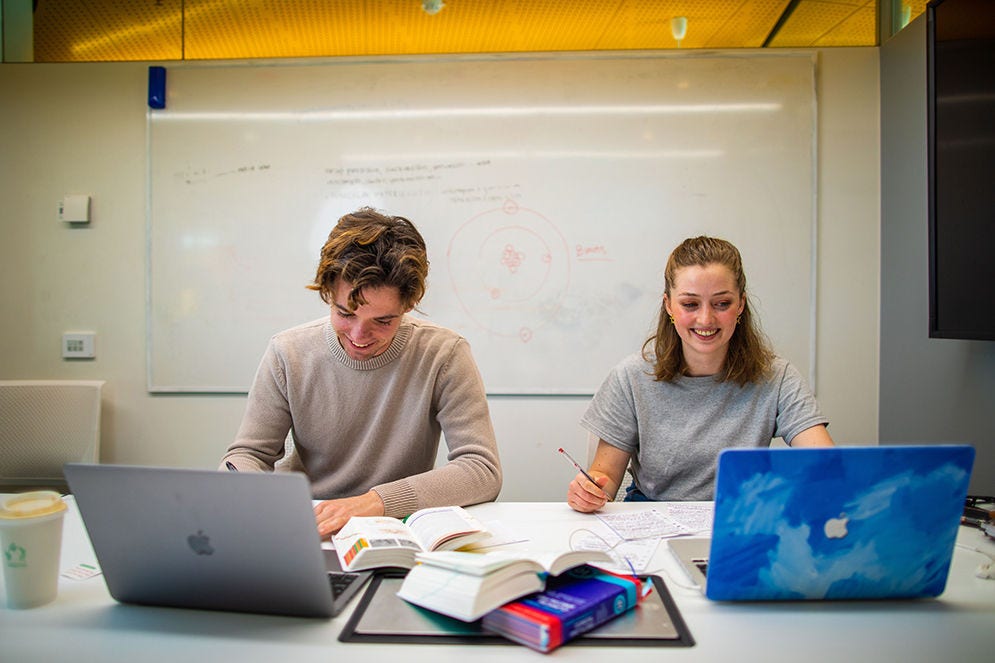
Overview
The Bachelor of Medical Radiation Science (Honours) majoring in Medical Imaging at Adelaide University prepares you for an exciting career in diagnostic radiography.
Gain over 1,400 hours of clinical experience. Work with industry-standard equipment like fully functioning x-ray suites. Learn from academics with clinical experience. Master techniques such as x-rays, fluoroscopy, and emergency imaging.
Build a solid foundation in medical sciences by studying anatomy, physiology, pathology, and radiation physics. Apply your knowledge during clinical placements. Pre-clinical workshops will also help you advance your skills as you move into specialised areas.
Complete a research project with expert supervision. This will lead to a thesis and oral presentation. The experience will sharpen your research skills and deepen your understanding of medical imaging, setting you apart in the field.
Graduates are highly sought after in hospitals, clinics, and specialised medical centres.
Further study can lead to specialisations in areas like medical resonance imaging (MRI) or sonography.
Key features
Graduate with honours, ready for leadership and specialist roles.
Gain 1,400 hours of clinical experience to sharpen your skills.
Train with cutting-edge x-ray suites and specialised equipment on campus.
Learn from clinical experts, leaders in medical imaging.
Get practical, theoretical and industry-focused knowledge to confidently enter the workforce.
Master research techniques that shape the future of healthcare.
What you'll learn
The Bachelor of Medical Radiation Science (Honours) majoring in Medical Imaging at Adelaide University is a comprehensive four-year degree. Prepare to become an expert in diagnostic imaging using advanced technologies.
In your first year, you'll study human anatomy, physiology, pathology, and radiation physics with an introduction to medical radiation practice. These core subjects will introduce you to the science behind medical imaging.
In second year, the focus shifts towards medical imaging techniques. Gain practical skills through clinical placements. Explore key areas like medical imaging studies and evidence-based practice. Courses in advanced physics ensure you’re equipped with the technical knowledge required in the field.
During your third year, hands-on learning increases with more clinical placements. Take specialised courses in Computed Tomography (CT) and Positron Emission Tomography (PET) imaging. As part of the honours component of your degree, you’ll sharpen your analytical and critical thinking skills with research preparation.
In your final year, complete a major research project and a thesis, combined with full-time clinical practice. These placements provide over 1,400 hours of hands-on experience with real patients and state-of-the-art imaging equipment.
Graduate ready to step into a career as a diagnostic radiographer or pursue further specialisation in medical imaging.
With a strong combination of academic knowledge, practical training, and research experience, you’ll be well-prepared to succeed in the fast-evolving medical imaging industry.
Majors
The Bachelor of Medical Radiation (Honours) is also available with majors in the following:
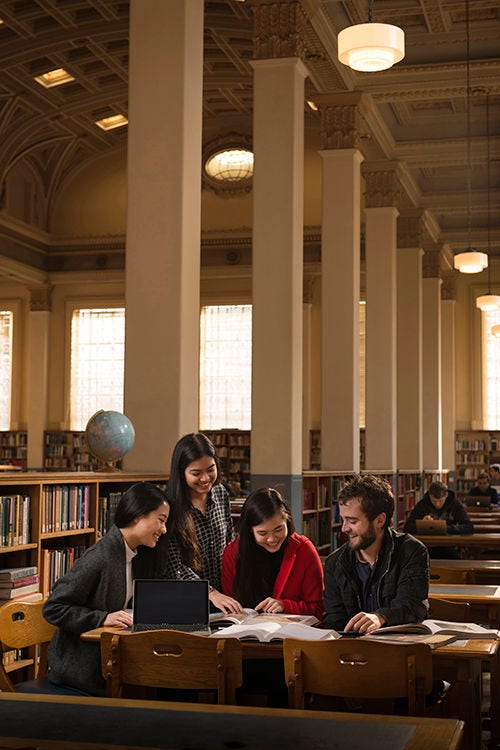
What courses you'll study
Complete 192 units comprising:
- 108 units for all Core courses, and
- 78 units for one Major from Majors, and
- 6 units for Electives
Complete 108 units for ALL of the following:
| Course name | Course code | Units | |
|---|---|---|---|
|
Course name
Human Anatomy 100
|
Course code
BIOL1006
|
Units
6
|
|
|
Course name
Human Physiology 100
|
Course code
BIOL1018
|
Units
6
|
|
|
Course name
Human Physiology 101
|
Course code
BIOL1019
|
Units
6
|
|
|
Course name
Medical Radiation Human Anatomy
|
Course code
HLTH1006
|
Units
6
|
|
|
Course name
Introduction to Evidence Based Practice and Research in Health Sciences
|
Course code
HLTH1016
|
Units
6
|
|
|
Course name
Aboriginal Health: Culture, Community and Country
|
Course code
HLTH1017
|
Units
6
|
|
|
Course name
Physics for Medical Radiation 100
|
Course code
PHYS1008
|
Units
6
|
|
|
Course name
Introduction to Medical Radiation Practice
|
Course code
RADI1002
|
Units
6
|
|
|
Course name
Pathology for Medical Radiation
|
Course code
DENT2008
|
Units
6
|
|
|
Course name
Human Anatomy 201 (Gross and Sectional)
|
Course code
RADI2005
|
Units
6
|
|
|
Course name
Physics for Medical Radiation 200
|
Course code
DENT3002
|
Units
6
|
|
|
Course name
Physics for Medical Radiation 300
|
Course code
DENT3003
|
Units
6
|
|
|
Course name
CT and PET Imaging
|
Course code
RADI3011
|
Units
6
|
|
|
Course name
Health Science Honours Preparation
|
Course code
REHB3007
|
Units
6
|
|
|
Course name
Specialised Medical Radiation
|
Course code
RADI4002
|
Units
6
|
|
|
Course name
Health Science Honours Thesis
|
Course code
REHB4005
|
Units
12
|
|
|
Course name
Fundamentals of Pharmacology
|
Course code
PHAR2011
|
Units
6
|
|
Notes
1. To undertake field/clinical placements, students are required to have current criminal history and screening checks. These checks will list disclosable court outcomes that may prevent field / clinical placement involvement and subsequently may prevent completion of the program.
2. Students are required to satisfy the standard of dress and behaviour prescribed by institutions in which clinical placements are undertaken. Failure to satisfy such requirements may prevent students from completing the program.
3. Maximum credit allowed is normally up to two thirds of the total units of the program.
4. The program requires participation in practical classes where manual skills are practiced. Essential learning activities in some classes may require that students partially remove their clothing to a level that is appropriate to the learning activity. Students may also be asked to act as subjects for their peer group members. If a student is unable to meet these requirements they may be at risk of being unable to successfully complete course objectives and assessments and progress through the program.
5. Participation is required in practical classes and clinical placements where students are required to physically handle people including lifting and supporting people with disabilities.
6. The clinical courses form a significant part of the program, and students are required to be reasonably fit to successfully undertake these components.
7. Students will be required to complete a clinical placement at a rural or regional location.
8. Students will be required to undertake clinical practice courses at scheduled periods across all seven study periods.
9. Attendance requirements apply to the clinical components of the program. Students enrolled in courses with a clinical component will need to attend on a full-time basis for the duration of the courses.
10. Students may be required to complete an interstate clinical placement.
| Course name | Course code | Units | |
|---|---|---|---|
| Year 1 | |||
| Semester 1 | |||
|
Course name
Introduction to Medical Radiation Practice
|
Course code
RADI1002
|
Units
6
|
|
|
Course name
Human Anatomy 100
|
Course code
BIOL1006
|
Units
6
|
|
|
Course name
Human Physiology 100
|
Course code
BIOL1018
|
Units
6
|
|
|
Course name
Aboriginal Health: Culture, Community and Country
|
Course code
HLTH1017
|
Units
6
|
|
| Semester 2 | |||
|
Course name
Physics for Medical Radiation 100
|
Course code
PHYS1008
|
Units
6
|
|
|
Course name
Human Physiology 101
|
Course code
BIOL1019
|
Units
6
|
|
|
Course name
Pathology for Medical Radiation
|
Course code
DENT2008
|
Units
6
|
|
|
Course name
Medical Radiation Human Anatomy
|
Course code
HLTH1006
|
Units
6
|
|
| Year 2 | |||
| Semester 1 | |||
|
Course name
Fundamentals of Pharmacology
|
Course code
PHAR2011
|
Units
6
|
|
|
Course name
Physics for Medical Radiation 200
|
Course code
DENT3002
|
Units
6
|
|
|
Course name
Human Anatomy 201 (Gross and Sectional)
|
Course code
RADI2005
|
Units
6
|
|
|
Course name
Medical Imaging Studies 1
|
Course code
RADI2006
|
Units
6
|
|
| Semester 2 | |||
|
Course name
Medical Imaging Clinical Practice 1
|
Course code
RADI2007
|
Units
6
|
|
|
Course name
Introduction to Evidence Based Practice and Research in Health Sciences
|
Course code
HLTH1016
|
Units
6
|
|
|
Course name
Physics for Medical Radiation 300
|
Course code
DENT3003
|
Units
6
|
|
|
Course name
Medical Imaging Studies 2
|
Course code
RADI3001
|
Units
6
|
|
| Year 3 | |||
| Semester 1 | |||
|
Course name
Health Science Honours Preparation
|
Course code
REHB3007
|
Units
6
|
|
|
Course name
CT and PET Imaging
|
Course code
RADI3011
|
Units
6
|
|
|
Course name
Medical Imaging Studies 3
|
Course code
RADI3002
|
Units
6
|
|
|
Course name
|
Course code
-
|
Units
6
|
|
| Semester 2 | |||
|
Course name
Medical Imaging Studies 4
|
Course code
RADI3003
|
Units
6
|
|
|
Course name
Medical Imaging Clinical Practice 2
|
Course code
RADI3012
|
Units
12
|
|
|
Course name
Specialised Medical Radiation
|
Course code
RADI4002
|
Units
6
|
|
| Year 4 | |||
| Semester 1 | |||
|
Course name
Health Science Honours Thesis
|
Course code
REHB4005
|
Units
12
|
|
|
Course name
Medical Imaging Clinical Practice 3
|
Course code
RADI4003
|
Units
12
|
|
| Semester 2 | |||
|
Course name
Medical Imaging Honours Clinical Practice 4
|
Course code
RADI4004
|
Units
6
|
|
|
Course name
Medical Imaging Honours Professional Entry Practice 1
|
Course code
RADI4005
|
Units
6
|
|
|
Course name
Medical Imaging Professional Entry Practice 2
|
Course code
RADI4006
|
Units
12
|
|
Complete 78 units for ALL of the following:
| Course name | Course code | Units | |
|---|---|---|---|
|
Course name
Medical Imaging Studies 1
|
Course code
RADI2006
|
Units
6
|
|
|
Course name
Medical Imaging Clinical Practice 1
|
Course code
RADI2007
|
Units
6
|
|
|
Course name
Medical Imaging Studies 2
|
Course code
RADI3001
|
Units
6
|
|
|
Course name
Medical Imaging Studies 3
|
Course code
RADI3002
|
Units
6
|
|
|
Course name
Medical Imaging Studies 4
|
Course code
RADI3003
|
Units
6
|
|
|
Course name
Medical Imaging Clinical Practice 2
|
Course code
RADI3012
|
Units
12
|
|
|
Course name
Medical Imaging Clinical Practice 3
|
Course code
RADI4003
|
Units
12
|
|
|
Course name
Medical Imaging Honours Clinical Practice 4
|
Course code
RADI4004
|
Units
6
|
|
|
Course name
Medical Imaging Honours Professional Entry Practice 1
|
Course code
RADI4005
|
Units
6
|
|
|
Course name
Medical Imaging Professional Entry Practice 2
|
Course code
RADI4006
|
Units
12
|
|
| Course name | Course code | Units | |
|---|---|---|---|
| Year 1 | |||
| Semester 1 | |||
|
Course name
Introduction to Medical Radiation Practice
|
Course code
RADI1002
|
Units
6
|
|
|
Course name
Human Anatomy 100
|
Course code
BIOL1006
|
Units
6
|
|
|
Course name
Human Physiology 100
|
Course code
BIOL1018
|
Units
6
|
|
|
Course name
Aboriginal Health: Culture, Community and Country
|
Course code
HLTH1017
|
Units
6
|
|
| Semester 2 | |||
|
Course name
Physics for Medical Radiation 100
|
Course code
PHYS1008
|
Units
6
|
|
|
Course name
Human Physiology 101
|
Course code
BIOL1019
|
Units
6
|
|
|
Course name
Pathology for Medical Radiation
|
Course code
DENT2008
|
Units
6
|
|
|
Course name
Medical Radiation Human Anatomy
|
Course code
HLTH1006
|
Units
6
|
|
| Year 2 | |||
| Semester 1 | |||
|
Course name
Fundamentals of Pharmacology
|
Course code
PHAR2011
|
Units
6
|
|
|
Course name
Physics for Medical Radiation 200
|
Course code
DENT3002
|
Units
6
|
|
|
Course name
Human Anatomy 201 (Gross and Sectional)
|
Course code
RADI2005
|
Units
6
|
|
|
Course name
Medical Imaging Studies 1
|
Course code
RADI2006
|
Units
6
|
|
| Semester 2 | |||
|
Course name
Medical Imaging Clinical Practice 1
|
Course code
RADI2007
|
Units
6
|
|
|
Course name
Introduction to Evidence Based Practice and Research in Health Sciences
|
Course code
HLTH1016
|
Units
6
|
|
|
Course name
Physics for Medical Radiation 300
|
Course code
DENT3003
|
Units
6
|
|
|
Course name
Medical Imaging Studies 2
|
Course code
RADI3001
|
Units
6
|
|
| Year 3 | |||
| Semester 1 | |||
|
Course name
Health Science Honours Preparation
|
Course code
REHB3007
|
Units
6
|
|
|
Course name
CT and PET Imaging
|
Course code
RADI3011
|
Units
6
|
|
|
Course name
Medical Imaging Studies 3
|
Course code
RADI3002
|
Units
6
|
|
|
Course name
|
Course code
-
|
Units
6
|
|
| Semester 2 | |||
|
Course name
Medical Imaging Studies 4
|
Course code
RADI3003
|
Units
6
|
|
|
Course name
Medical Imaging Clinical Practice 2
|
Course code
RADI3012
|
Units
12
|
|
|
Course name
Specialised Medical Radiation
|
Course code
RADI4002
|
Units
6
|
|
| Year 4 | |||
| Semester 1 | |||
|
Course name
Health Science Honours Thesis
|
Course code
REHB4005
|
Units
12
|
|
|
Course name
Medical Imaging Clinical Practice 3
|
Course code
RADI4003
|
Units
12
|
|
| Semester 2 | |||
|
Course name
Medical Imaging Honours Clinical Practice 4
|
Course code
RADI4004
|
Units
6
|
|
|
Course name
Medical Imaging Honours Professional Entry Practice 1
|
Course code
RADI4005
|
Units
6
|
|
|
Course name
Medical Imaging Professional Entry Practice 2
|
Course code
RADI4006
|
Units
12
|
|
Complete 6 units comprising:
- 6 units from University-wide electives
Notes
1. To undertake field/clinical placements, students are required to have current criminal history and screening checks. These checks will list disclosable court outcomes that may prevent field / clinical placement involvement and subsequently may prevent completion of the program.
2. Students are required to satisfy the standard of dress and behaviour prescribed by institutions in which clinical placements are undertaken. Failure to satisfy such requirements may prevent students from completing the program.
3. Maximum credit allowed is normally up to two thirds of the total units of the program.
4. The program requires participation in practical classes where manual skills are practiced. Essential learning activities in some classes may require that students partially remove their clothing to a level that is appropriate to the learning activity. Students may also be asked to act as subjects for their peer group members. If a student is unable to meet these requirements they may be at risk of being unable to successfully complete course objectives and assessments and progress through the program.
5. Participation is required in practical classes and clinical placements where students are required to physically handle people including lifting and supporting people with disabilities.
6. The clinical courses form a significant part of the program, and students are required to be reasonably fit to successfully undertake these components.
7. Students will be required to complete a clinical placement at a rural or regional location.
8. Students will be required to undertake clinical practice courses at scheduled periods across all seven study periods.
9. Attendance requirements apply to the clinical components of the program. Students enrolled in courses with a clinical component will need to attend on a full-time basis for the duration of the courses.
10. Students may be required to complete an interstate clinical placement.
| Course name | Course code | Units | |
|---|---|---|---|
| Year 1 | |||
| Semester 1 | |||
|
Course name
Introduction to Medical Radiation Practice
|
Course code
RADI1002
|
Units
6
|
|
|
Course name
Human Anatomy 100
|
Course code
BIOL1006
|
Units
6
|
|
|
Course name
Human Physiology 100
|
Course code
BIOL1018
|
Units
6
|
|
|
Course name
Aboriginal Health: Culture, Community and Country
|
Course code
HLTH1017
|
Units
6
|
|
| Semester 2 | |||
|
Course name
Physics for Medical Radiation 100
|
Course code
PHYS1008
|
Units
6
|
|
|
Course name
Human Physiology 101
|
Course code
BIOL1019
|
Units
6
|
|
|
Course name
Pathology for Medical Radiation
|
Course code
DENT2008
|
Units
6
|
|
|
Course name
Medical Radiation Human Anatomy
|
Course code
HLTH1006
|
Units
6
|
|
| Year 2 | |||
| Semester 1 | |||
|
Course name
Fundamentals of Pharmacology
|
Course code
PHAR2011
|
Units
6
|
|
|
Course name
Physics for Medical Radiation 200
|
Course code
DENT3002
|
Units
6
|
|
|
Course name
Human Anatomy 201 (Gross and Sectional)
|
Course code
RADI2005
|
Units
6
|
|
|
Course name
Medical Imaging Studies 1
|
Course code
RADI2006
|
Units
6
|
|
| Semester 2 | |||
|
Course name
Medical Imaging Clinical Practice 1
|
Course code
RADI2007
|
Units
6
|
|
|
Course name
Introduction to Evidence Based Practice and Research in Health Sciences
|
Course code
HLTH1016
|
Units
6
|
|
|
Course name
Physics for Medical Radiation 300
|
Course code
DENT3003
|
Units
6
|
|
|
Course name
Medical Imaging Studies 2
|
Course code
RADI3001
|
Units
6
|
|
| Year 3 | |||
| Semester 1 | |||
|
Course name
Health Science Honours Preparation
|
Course code
REHB3007
|
Units
6
|
|
|
Course name
CT and PET Imaging
|
Course code
RADI3011
|
Units
6
|
|
|
Course name
Medical Imaging Studies 3
|
Course code
RADI3002
|
Units
6
|
|
|
Course name
|
Course code
-
|
Units
6
|
|
| Semester 2 | |||
|
Course name
Medical Imaging Studies 4
|
Course code
RADI3003
|
Units
6
|
|
|
Course name
Medical Imaging Clinical Practice 2
|
Course code
RADI3012
|
Units
12
|
|
|
Course name
Specialised Medical Radiation
|
Course code
RADI4002
|
Units
6
|
|
| Year 4 | |||
| Semester 1 | |||
|
Course name
Health Science Honours Thesis
|
Course code
REHB4005
|
Units
12
|
|
|
Course name
Medical Imaging Clinical Practice 3
|
Course code
RADI4003
|
Units
12
|
|
| Semester 2 | |||
|
Course name
Medical Imaging Honours Clinical Practice 4
|
Course code
RADI4004
|
Units
6
|
|
|
Course name
Medical Imaging Honours Professional Entry Practice 1
|
Course code
RADI4005
|
Units
6
|
|
|
Course name
Medical Imaging Professional Entry Practice 2
|
Course code
RADI4006
|
Units
12
|
|
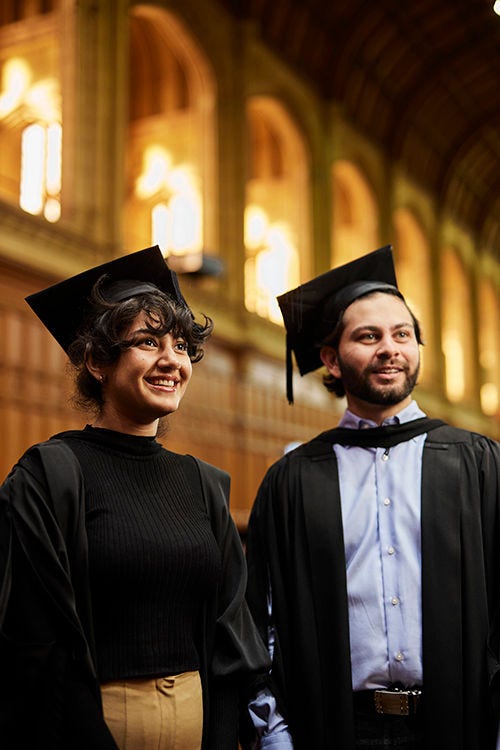
Career outcomes
There is strong demand for medical imaging professionals in Australia and globally. You may work in a hospital, private clinic, or medical equipment company. You might pursue a research role and contribute to advancements in diagnostic techniques. Or you could specialise further with additional training and move into areas like MRI, CT, or sonography.
As a medical imaging professional, you’ll work closely with both patients and technology. Play a vital role in patient care and help diagnose and monitor a wide range of health conditions.
With further study or training, you can advance into specialised roles such as:
- Interventional radiographer
- MRI technologist
- CT radiographer
- Sonographer.
A successful career in medical imaging requires a passion for helping others, a love of technology, and an interest in the human body. Graduates are eligible for registration with the Australian Health Practitioner Regulation Agency (AHPRA).
Industry trends
Medical imaging is a rapidly growing field. There is increasing demand for professionals skilled in advanced diagnostic technologies. Globally, the medical imaging market is projected to grow from $40.9 billion in 2023 to $62.5 billion by 2030 (Fortune Business Insights, Medical Imaging Market Report). This will be driven by advancements in imaging technologies and rising demand for diagnostic procedures.
Other key growth factors include:
- The ageing population requiring more diagnostic imaging.
- Increasing prevalence of chronic diseases like cancer and cardiovascular conditions.
- Advancements in imaging technologies, such as Artificial Intelligence (AI) and 3D imaging.
When you step into a career in medical imaging, your skills will make every diagnosis a clear picture of better health. Enter a high-demand field with opportunities to work alongside cutting-edge technology and contribute to better patient outcomes.
Accreditation
This program is accredited by the Medical Radiation Practice Accreditation Committee and approved by the Medical Radiation Practice Board of Australia. Graduates are eligible to apply for registration with the Medical Radiation Practice Board of Australia.
Ready to apply?
Please note that a non-refundable application fee of AUD$150 applies for every application submitted to Adelaide University.
Your study experience and support
Adelaide University sets you up for success in your studies – and your social life. You’ll have access to work placement and internship opportunities, overseas study tours and exchanges, networking events with guest speakers and more. Our campuses are equipped with purpose-built facilities including lecture theatres, libraries, workshops, laboratories, and spaces that simulate real work environments. These are all supported by the latest technologies and a 24/7 online learning platform with personalised study information and resources.
You’ll have everything you need to live well and thrive during your studies, with health services on campus, gymnasiums, technology zones and modern student lounges. Get involved in campus sport or join our student clubs that will connect you to your passions – and the people who share them.
Adelaide also has a variety of accommodation options to suit your individual requirements and budget, with options ranging from dedicated student accommodation to private rentals. One of the world’s most liveable cities, Adelaide has lots of leafy parks, gardens and social hubs – and some of the highest living standards globally. No matter where you are in Adelaide, you’re only a short distance from beaches, vineyards, museums, art galleries, restaurants, bars and parklands. Visit the accommodation web page to find out more.
Student services
We’re here to support you on your student journey. Adelaide University offers a range of support services and facilities, including:
- Career advice and mentoring services
- Personal counselling
- LGBTQIA+ support
- Academic support
- Fees and finance help
- Security services
- Accommodation services
- Common rooms
- Prayer rooms.
You’ll also have unlimited access to our dedicated student support hub. Visit in-person or online, or contact our friendly team by phone. We can assist you with anything study-related including enrolment, identification cards, timetables, fees and more.

Your campus
You'll be studying at one of our renowned campuses, accessing cutting-edge facilities and contemporary study spaces.
Study hours
Your courses will require a combination of different learning formats, including lectures, tutorials, workshops, seminars and practicals. Aside from your classes, you’ll also need to allocate additional time for independent study. This may include assignments, readings, projects and contributing to online discussion forums. As a rough guide, full-time studies may require 12-26 hours of class time and 14-18 hours of independent study per week.
Assessment
During your studies at Adelaide University, you’ll complete a mixture of practical, professional and research-based learning. Your assessment types will vary depending on the degree you’re studying, but may include:
- Case studies
- Essays and assignments
- Examinations
- Group projects
- Internships and placements
- Practicals
- Presentations
- Reports and project documentations
- Research projects
- Workplace and classroom contributions.

